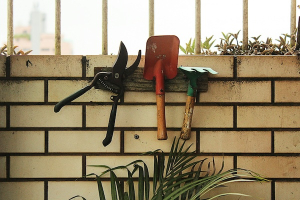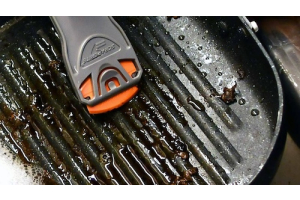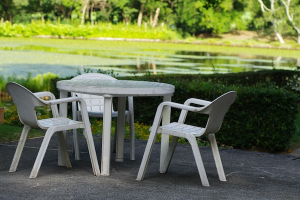Precision Over Pressure: A Better Way to Clean Your Boat

If you own a boat, you know that grime, buildup, and scuffs are just part of the deal. Whether it’s salt crust along the rails, algae at the waterline, or mystery gunk in a tight hatch corner, keeping your vessel clean takes regular effort and the right tools.
Here’s the problem: traditional scrubbing often spreads the mess more than it removes it. You rub and rub, but the real buildup stays stuck, while everything around it gets a good smear. Worse, over-scrubbing can dull finishes, scratch gelcoat, or wear down decals.
That’s where a handheld plastic scraper earns its keep. It’s small, simple, and budget-friendly—but don't underestimate it. This tool lets you target the exact problem spot, applying pressure where it counts without damaging nearby surfaces. No chemicals, no stress, just clean results.
Why Scrubbing Falls Short on a Boat
Marine grime is a different beast. Salt, dead bugs, fish residue, hard water marks, they all love to cling. And many surfaces on a boat are either textured (like non-skid) or delicate (like clear vinyl or polished hardware). Standard scrub brushes and abrasive pads? Too rough in the wrong places, too weak in others.
Scrubbing also tends to push dirt around the stain instead of removing it. You end up with a clean-ish area surrounding a still-grimy center. Sound familiar?
Targeted Scraping = Smart Cleaning
A plastic scraper gives you precision over pressure. Instead of spreading the mess, you’re lifting it cleanly and directly.
Here’s where it really shines on a boat:
- Removing dried salt from railings, consoles, and deck edges
- Scraping barnacle residue from outdrives or hull sections after haul-out
- Cleaning scuffs from fiberglass without damaging gelcoat
- Getting into tight seams and corners where mildew likes to hide
- Lifting adhesive or tape residue from windows, cleats, and trim
The plastic blade is stiff enough to dislodge tough buildup but gentle enough to use on most surfaces without scratching, perfect for boats where materials like fiberglass, acrylic, and vinyl are common.
Affordable, Portable, Indispensable
Let’s be honest, marine-grade anything usually comes with a premium price tag. That’s why a plastic scraper is a standout: it’s cheap, effective, and lasts a long time. You can pick one up for a few bucks, and many versions include replaceable blades so you can keep it sharp and ready.
They’re compact, too—easy to stash in your onboard cleaning kit, tackle box, or tool drawer. You'll use it more often than you expect.
Boat Cleaning Tips with a Scraper:
- Start with a rinse: Knock off loose salt or grime with water first.
- Use even, steady pressure: Let the scraper edge do the lifting.
- Pair with a cleaning solution if needed: For really stuck-on spots, a quick spray helps.
- Keep it handy: You’ll find yourself reaching for it again and again.
Final Thoughts
On a boat, there’s no shortage of spots that need attention, but that doesn’t mean you need a shelf full of expensive tools. Sometimes, the most effective solution is also the simplest.
A plastic scraper is the quiet hero of any boat cleaning routine. It lets you tackle crusted salt, scuffs, and stains with focus and finesse—saving your surfaces and your energy. For marine applications, Scraperite's blue blade is a standout choice. Durable yet flexible, it's designed specifically for use in environments exposed to chlorinated chemicals, like pools, spas, and, of course, the marine world. These blades offer a perfect balance of strength and flexibility, allowing them to conform to curves and textured surfaces without losing their edge. Tough enough to scrape away barnacles and other marine growth, yet gentle enough to use on boat finishes, this blade is built for real-world boating conditions. So next time you're facing a stubborn patch of marine buildup, skip the harsh scrub—scrape smarter with the right tool for the job.








